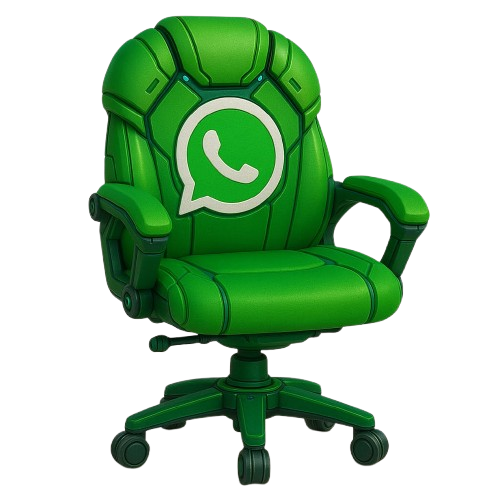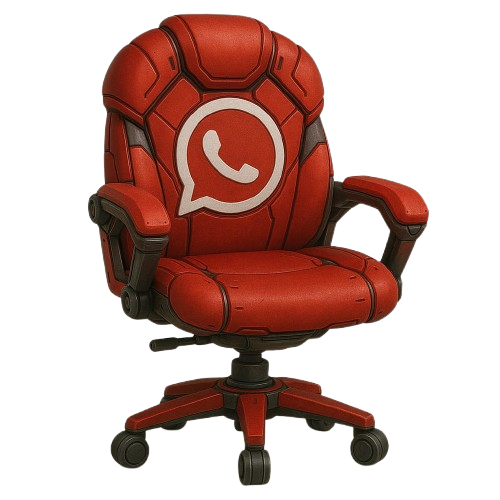Cruise Ship and Custom Made Furniture Supplier in Dubai, India, Singapore | Furniconcepts
Cruise ship furniture suppliers tackle challenges that go beyond regular interior design choices. Our 30 years in the industry taught us that each furniture piece must balance luxury looks with maritime durability. Yes, it is a specialized field that needs solutions to handle harsh sea conditions while creating memorable experiences for guests.
The right weight and stability are vital factors when picking cruise ship furniture. Quality custom-made furniture from Dubai, Singapore, and India gives cruise lines great ways to get both quality and efficiency. Leading suppliers have equipped more than 200 vessels with cruise-quality furniture in the last decade. This shows how much the specialized market just needs these products.
Furniconcepts creates furniture that meets tough marine standards and boosts passenger comfort. We know everything about cruise ship interiors, from outdoor lounges built with recycled materials to dining furniture that handles 800 pounds per square inch of pressure. This piece walks you through everything you should know to pick the right cruise ship furniture supplier for your maritime project.
Understanding Cruise Ship Furniture Needs
Designing furniture for ships comes with challenges that set it apart from any other setting. Marine environments create a special set of requirements that land-based venues never have to deal with.
Why Marine Environments Just Need Special Materials
Standard materials deteriorate faster in marine environments under extreme conditions. Salt water makes metals corrode quickly, strong UV rays break down polymers, and changing humidity levels help mold grow. Ship furniture suppliers must choose materials engineered specifically for maritime conditions to curb these issues.
Marine-grade stainless steel (especially grades 316 and 316L) contains molybdenum that helps resist salt corrosion better. UV-resistant finishes keep outdoor deck furniture from fading, while weatherproof fabrics with water-repellent properties help upholstery stay fresh despite moisture exposure. High-performance polymers with stabilizers keep their structural strength even after years in the sun.
Weight, Space, and Safety Considerations
Every pound counts on vessels where weight affects fuel efficiency and ship stability. Lightweight marine plywood is a great choice to optimize space and reduce the vessel's total load. Better fuel efficiency becomes possible without giving up structural strength.
Safety rules shape every part of cruise ship interiors. Materials must meet strict international maritime standards like IMO (International Maritime Organization) and SOLAS (Safety of Life at Sea). These rules make sure furniture materials can resist fire and stay secure during rough weather.
Balancing Luxury with Functionality
Today's passengers expect five-star hotel luxury along with practical features suited for marine conditions. This calls for careful material selection and smart design solutions.
Kelly Hoppen, a well-known designer, puts it simply: "The approach I take to a cruise ship is no different to that of a five-star hotel". The real challenge lies in creating storage without losing luxurious space. Smart integration of technology and elegant design lets features like mood lighting change at the touch of a button, creating sophisticated yet comfortable spaces.
Cruise ship furniture makers in Singapore, Dubai, and India succeed by creating pieces that look beautiful and last long at sea. Their furniture must stay functional and attractive through years of marine service.
Types of Custom Furniture for Cruise Ships
Cruise ships need special furniture that looks good and works well for life at sea. Each piece serves multiple roles because space comes at a premium and conditions can be harsh.
Outdoor Lounges and Sunbeds
Deck furniture takes a beating from the elements, so it needs exceptional durability. Pool deck sun loungers are in high demand, especially during sea days when passengers compete for limited deck space. Today's manufacturers design lounge chairs with resistance, comfort and versatility built-in to handle corrosive salt water and intense UV radiation.
Cruise lines have found smart ways to manage these valuable assets. To name just one example, Carnival's "ChairShare Team" tracks lounger usage with timed stickers and removes items from empty chairs after 40 minutes. Modern deck layouts offer various options from basic chairs to luxury daybeds right by the water's edge.
Dining and Bar Furniture
Restaurant and bar areas need furniture that's both tough and stylish. High-quality pieces use materials like stainless steel, treated woods, and marine-grade fabrics to last longer in challenging conditions. Highboy tables with custom spandex covers give passengers the perfect height to socialize while enjoying drinks and appetizers.
Leading manufacturers make stackable chairs and tables that staff can easily store when spaces need changes. Triple powder coating keeps colors bright even after years of outdoor exposure.
Balcony and Compact Space Solutions
Cabin balconies create unique challenges because standard chairs often leave passengers' eyes right at railing height, blocking ocean views. Some passengers think about bringing foldable bar-height chairs, but this raises safety concerns during rough seas.
Smart cruise furniture suppliers create custom-designed pieces that work better in tight spaces. Simple fixes like cushioned seating can lift passengers just enough without risking safety.
Custom Umbrellas and Shade Systems
Shade systems play a crucial role in cruise deck design. Marine-grade umbrellas can rotate 360°, letting guests adjust their shade throughout the day. The Marlin Custom Cruise Umbrella shows this perfectly with its sleek design, hidden ribs, and accordion-fold canopies.
These systems use Solidum or Sunbrella fabrics—engineered specifically to handle rain, UV radiation, stains, and mold. Mounting choices include in-ground fixtures, heavy bases up to 700 pounds, and mobile wheeled bases, based on deck requirements.
Regional Suppliers: Dubai, India, and Singapore
Maritime furniture hubs around the world each bring their own unique advantages to cruise line operators looking for specialized solutions.
Custom Made Furniture in Dubai: Design and Export Strengths
Dubai's furniture makers excel at customization. Clients can pick specific materials, shapes, and colors for their marine projects. Classic Furniture and other Dubai suppliers turn their client's ideas into reality through expert craftsmanship. These companies provide luxury standards at affordable rates. They create peaceful spaces that improve passenger experiences.
Habitat Furniture Factory sits in the heart of Al Quoz 2. The company turns design concepts into physical forms that match their client's priorities. They don't just make furniture - they maintain and repair it too. This saves cruise operators from getting stuck with pricey replacements.
Cruise Ship Furniture Suppliers in India: Manufacturing Scale and Cost-Efficiency
India has become a powerhouse in the cruise ship furniture market. The country makes up about 18% of global furniture exports, with 727,090 shipments on record. This huge volume means better prices without cutting corners on quality.
Indian suppliers catch cruise lines' attention with their large-scale project handling. These manufacturers adjust their production to meet client needs. They strike the right balance between budget limits and maritime-grade quality standards.
Cruise Ship Furniture Manufacturer in Singapore: Innovation and Quality Control
Singapore manufacturers like DSG Cruise Interiors use cutting-edge automated machinery for reliable production cycles. ICF Group, which started in 1989, provides detailed turnkey solutions. They bring over 35 years of expertise in cruise ship new-builds, modernization, and maintenance.
Singapore suppliers stand out through strict quality control and technical breakthroughs. Their skilled workers deliver precise results whatever the project size. Manufacturing facilities spread across Singapore, Malaysia, and China help these companies work efficiently. They also offer showrooms where clients can see their designs come to life early in the project.
What Sets Furniconcepts Apart
Choosing the right cruise ship furniture supplier can make or break a project in today's maritime market. Furniconcepts stands out because of its systematic approach to marine furnishing solutions.
Marine-Grade Materials and Engineering
Furniconcepts works with materials that resist corrosion, moisture, and UV exposure. Their designs feature marine-grade stainless steel, aluminum, and synthetic teak - materials that hold up well in saltwater conditions. The company goes beyond simple durability and uses triple powder coating processes. This helps maintain bright colors even after years of outdoor exposure.
Customization Options for Cruise Lines
Every vessel has its own unique identity. Furniconcepts has extensive customization options that match furniture with the ship's branding and theme. The team collaborates with clients to bring specific visions to life while keeping maritime functionality intact.
Compliance with International Maritime Standards
Furniconcepts products meet strict International Maritime Organization (IMO) regulations. These required safety standards ensure materials pass fire resistance tests. This creates environments that keep passengers safe while lasting long at sea.
Global Logistics and Project Coordination
The company's project management skills work across borders. Furniconcepts handles everything from manufacturing to installation smoothly. Their service connects design teams, manufacturers, and installers. This reduces project risks and keeps tight schedules.
Conclusion
The success of maritime projects depends on picking the right furniture supplier for cruise ships. Marine settings just need specialized solutions that balance luxury with functionality and meet strict safety standards. This piece explores how custom-made furniture should withstand harsh elements like saltwater, UV radiation, and humidity while giving passengers exceptional comfort.
Companies like Furniconcepts have developed expertise to tackle these unique challenges. Our 30 years of experience shows that weight considerations, space optimization, and material selection play vital roles in cruise ship furnishing. Each piece - from outdoor lounges and sunbeds to dining furniture and balcony solutions - must serve multiple purposes yet look appealing.
Suppliers of all sizes across Dubai, India, and Singapore bring unique advantages to the table. Dubai shines in personalization and design, India delivers manufacturing scale with budget-friendly options, and Singapore leads in breakthroughs and quality control. All the same, Furniconcepts stands out through marine-grade materials, custom options, compliance with international standards, and uninterrupted global logistics.
Next time you're aboard a cruise ship, pause to appreciate each furniture piece's engineering. Those cozy deck loungers, elegant dining chairs, and space-saving cabin solutions showcase years of specialized design expertise. Of course, as the cruise industry grows, the need for furniture combining durability with luxury will keep rising. Furniconcepts stays ready to deliver this blend, helping passengers enjoy both comfort and safety on their sea voyages.
FAQs
Q1. What makes cruise ship furniture different from regular furniture?
Cruise ship furniture is specially designed to withstand harsh marine environments, including saltwater exposure, intense UV radiation, and humidity. It must also meet strict safety standards, be lightweight for fuel efficiency, and balance luxury with functionality in compact spaces.
Q2. How does Furniconcepts ensure their furniture is suitable for cruise ships?
Furniconcepts uses marine-grade materials resistant to corrosion and UV exposure, such as stainless steel and synthetic teak. They also apply triple powder coating for color durability and ensure all products comply with International Maritime Organization (IMO) regulations for safety at sea.
Q3. What types of custom furniture are commonly found on cruise ships?
Common types include outdoor lounges and sunbeds, dining and bar furniture, balcony and compact space solutions, and custom umbrellas and shade systems. Each type is designed to maximize comfort and functionality while meeting the unique challenges of maritime environments.
Q4. How do furniture suppliers in Dubai, India, and Singapore differ?
Dubai suppliers excel in personalization and design, Indian manufacturers offer large-scale production and cost efficiency, while Singapore-based companies focus on innovation and strict quality control. Each region provides unique advantages for cruise lines seeking specialized furniture solutions.
Q5. Why is weight an important factor in cruise ship furniture design?
Weight is crucial because it directly impacts a ship's fuel efficiency and overall stability. Lightweight materials, such as marine plywood, are often used to optimize space and reduce the vessel's total load without compromising on structural integrity or passenger comfort.

Hey! How are you today? 👋 Want to check out our eCommerce site and explore our products? 🛍️ Shopping & Amazing discounts




